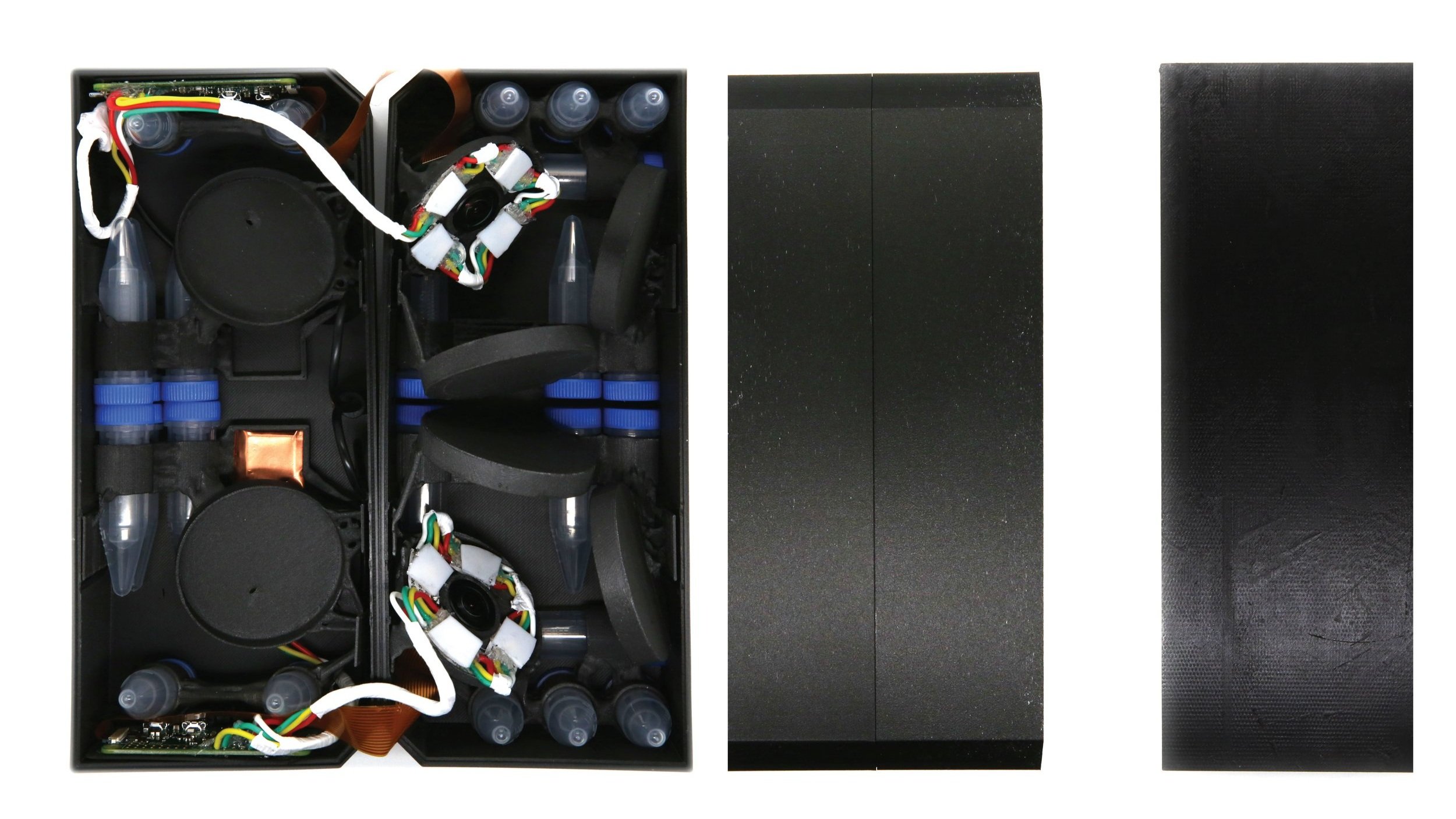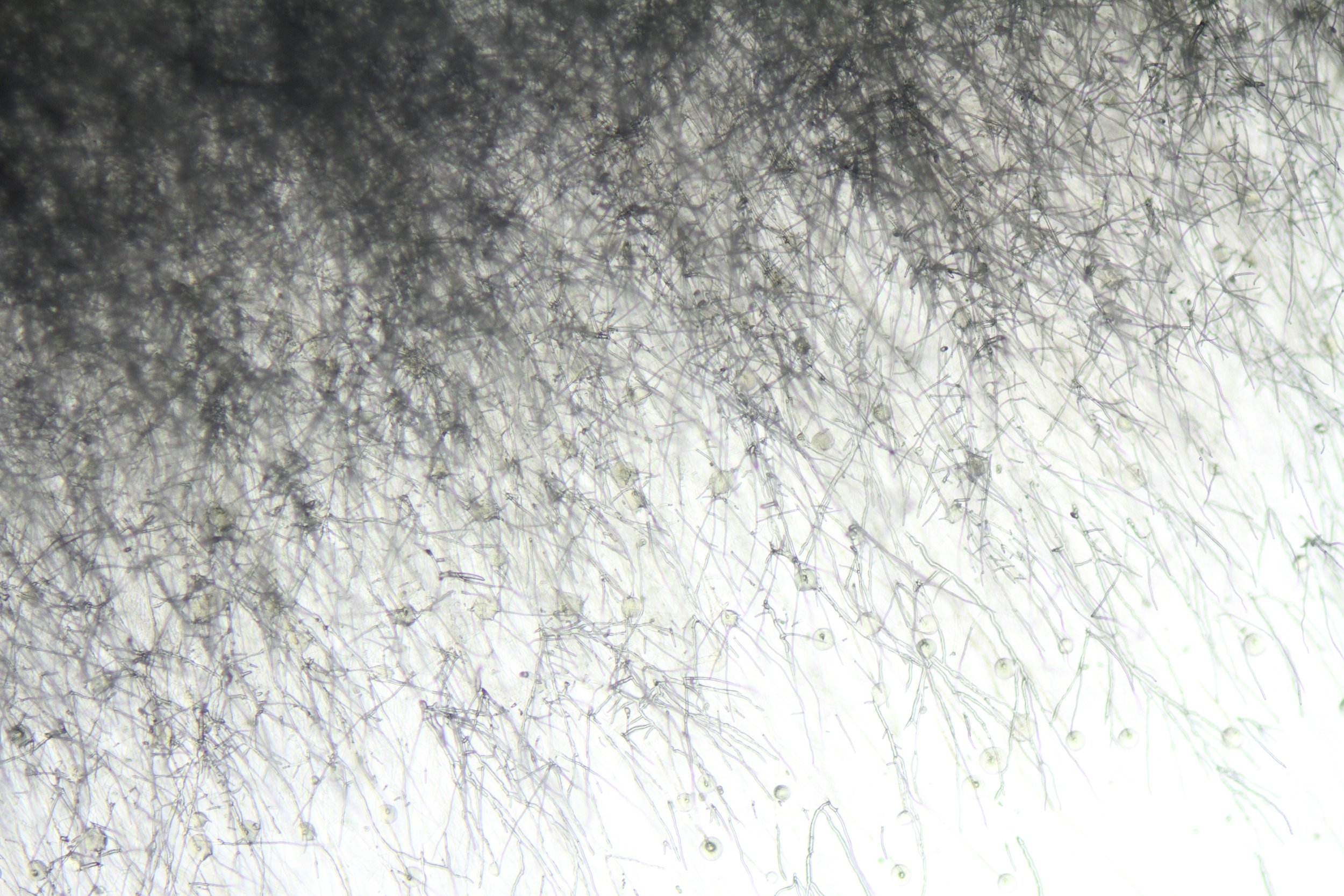
Radiofungi
Radiofungi is an autonomous micro-laboratory that explores how other species thrive in the harsh environment of outer space.

Motivation
A major concern for manned missions is space radiation. Ionizing radiation is known to pose both acute and chronic risks to many organisms, including humans. At this time, it is important to expand strategies for radiation protection, including utilizing new materials and fabrication methods that can support health. Radiofungi explores the synthesis of biological pigments, including melanins and carotenoids, for biocompatible radioprotection. Such pigments can be fabricated for a variety of applications, creating a new class of materials and coatings that can protect life on Earth, in deep space, and beyond.
Certain bacteria and fungi show a remarkable ability to persist – and even thrive – in high-radiation environments. The bacterium Deinococcus radiodurans has been shown to survive in extreme conditions, including those with high radiation. Similarly, discovery of fungi inhabiting the interior of the International Space Station and highly irradiated terrestrial sites has led to interest in organisms like the fungus genus Aspergillus. Some of these organisms form biopolymer pigments such as carotenoids and melanins, which are thought to have an important role in the radioresistance of the organisms. For this reason, research is being conducted in different space environments to understand the impact of radiation and the most effective adaptive strategies within biological systems.
Radiofungi examines the growth and behavior of several species in the radiation of space in order to determine mechanisms by which they may adapt to these harsh conditions. Through studying these organisms, we aim to elucidate not only the biological tools that protect and sustain them, but gain a deeper understanding of how life can persist in the most hostile of places.


Overview
To understand the radioprotective effects of biological pigments, an autonomous laboratory environment for the cultivation and monitoring of live-cultures of fungi and bacteria was designed and flown aboard the International Space Station for 30 days. The designed module included a host of onboard sensors to record ionizing radiation levels, temperature, and humidity for the duration of flight. The payload also contained space for six live co-cultures of pigment producing bacteria and fungi as well as 24 vials containing living bacteria shielded by an external environment of pigment suspension.
Upon the payload’s return from orbit, these species were tested against controls in order to determine the impacts of prolonged exposure to the spaceflight environment and to examine which pigments may demonstrate protective effects.
The Radiofungi environment may be flexibly adapted to house a broad range of contents, automatically optimizing its configuration to fit the designated components. A procedural script is used to determine the optimal configuration of payload contents and the management of electronic systems. Once constructed, the watertight system is plug and play – it automatically records data with the input of power.
Digital Design
Recent years have seen a dramatic increase in access to experimental environments in spaceflight or low-earth orbit. However, these environments typically have dramatic spatial and environmental constrains, posing unique design challenges to experimenters. Radiofungi implements a procedural pipeline that optimizes the positioning of payload components and fixes in them in place with a generated geometry that can then be 3D printed. This system can be flexibly applied to a wide range of payload contents and can automatically manage unique conditions such as the positioning of cameras and electrical wires.
Radiofungi’s payload included twenty-four vials of bacterial culture, six petri dishes, two microcomputers, two time-lapse cameras, one geiger counter and a temperature and humidity sensor. All components operated automatically upon the system’s startup and ran for the duration of spaceflight.
Materials
Radiation exposure poses a persistent risk to humans and other organisms in space. However, certain species have found ways to survive and thrive in elevated radiation environments. Radiofungi’s automated laboratory system collected a wealth of data related to the growth of these organisms during spaceflight and compared them to other organisms grown in a controlled environment on earth. Additional data was collected related to the use of suspended pigments as shields from radiation. The findings of these experiments may yield important insights related to the radioprotective effects of biological materials, and may even lead to the development of novel radiation shields.
Radiofungi / 2019
-
Acknowledgements
The Mediated Matter Group
Sunanda Sharma, Rachel Smith, Nic Lee, Sara Wilson, and Prof. Neri Oxman
Further Acknowledgements
MIT Media Lab, NOE. LLC., Emerson Collective, GETTYLAB, Robert Wood Johnson Foundation, Autodesk BUILD Space, MIT SEI, TRISH
-
Publications
Exogenous pigments shield microorganisms from spaceflight-induced changes.
S. Sharma, R. S. H. Smith, N. A. Lee, S. L. Wilson, M. M. Smith, N. Oxman. bioRxiv 2021.07.29.454367; doi: https://doi.org/10.1101/2021.07.29.454367*Manuscripts currently in progress
-
Awards and Recognition
Awards
Space Exploration Initiative + TRISH Grant




